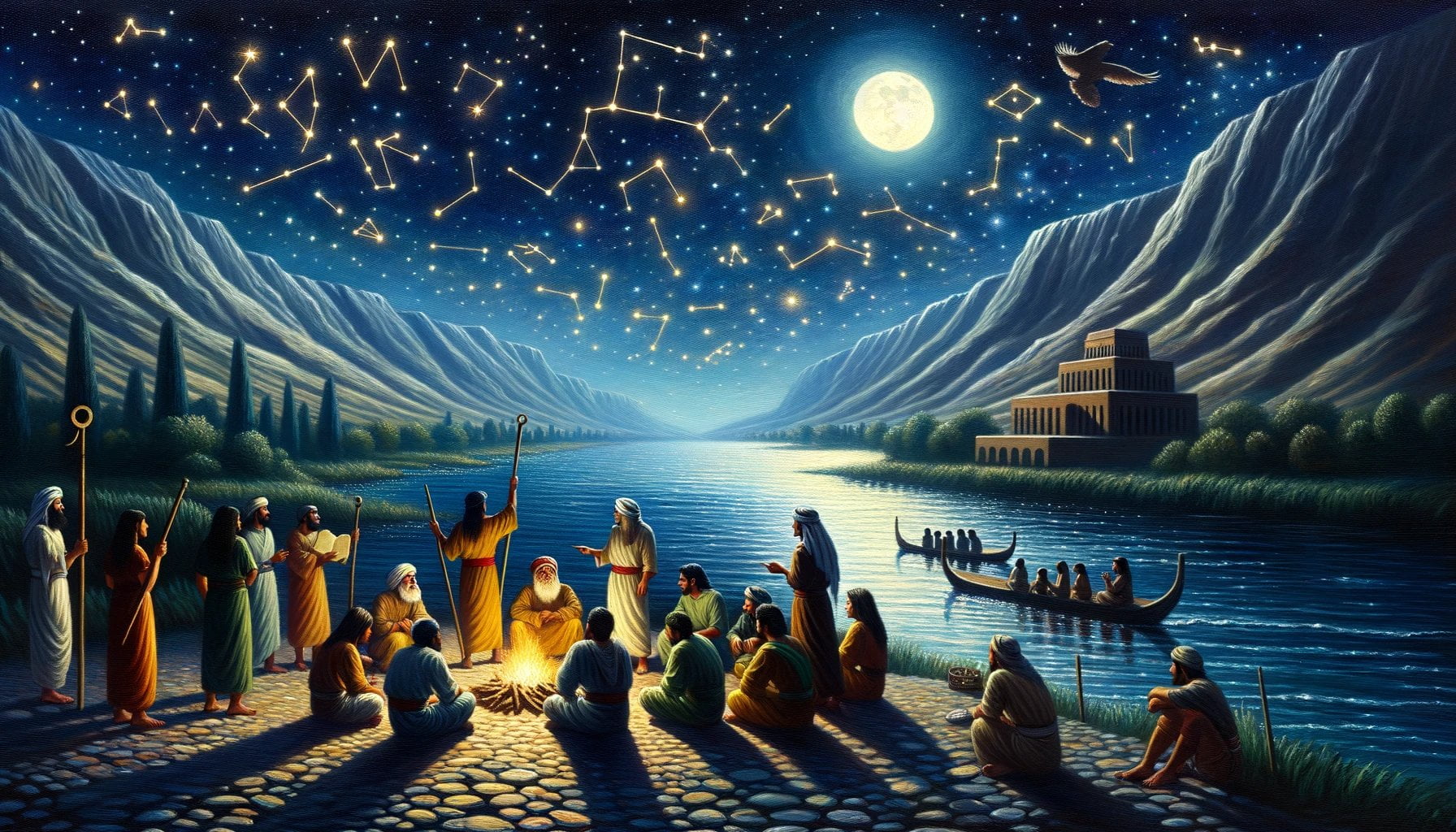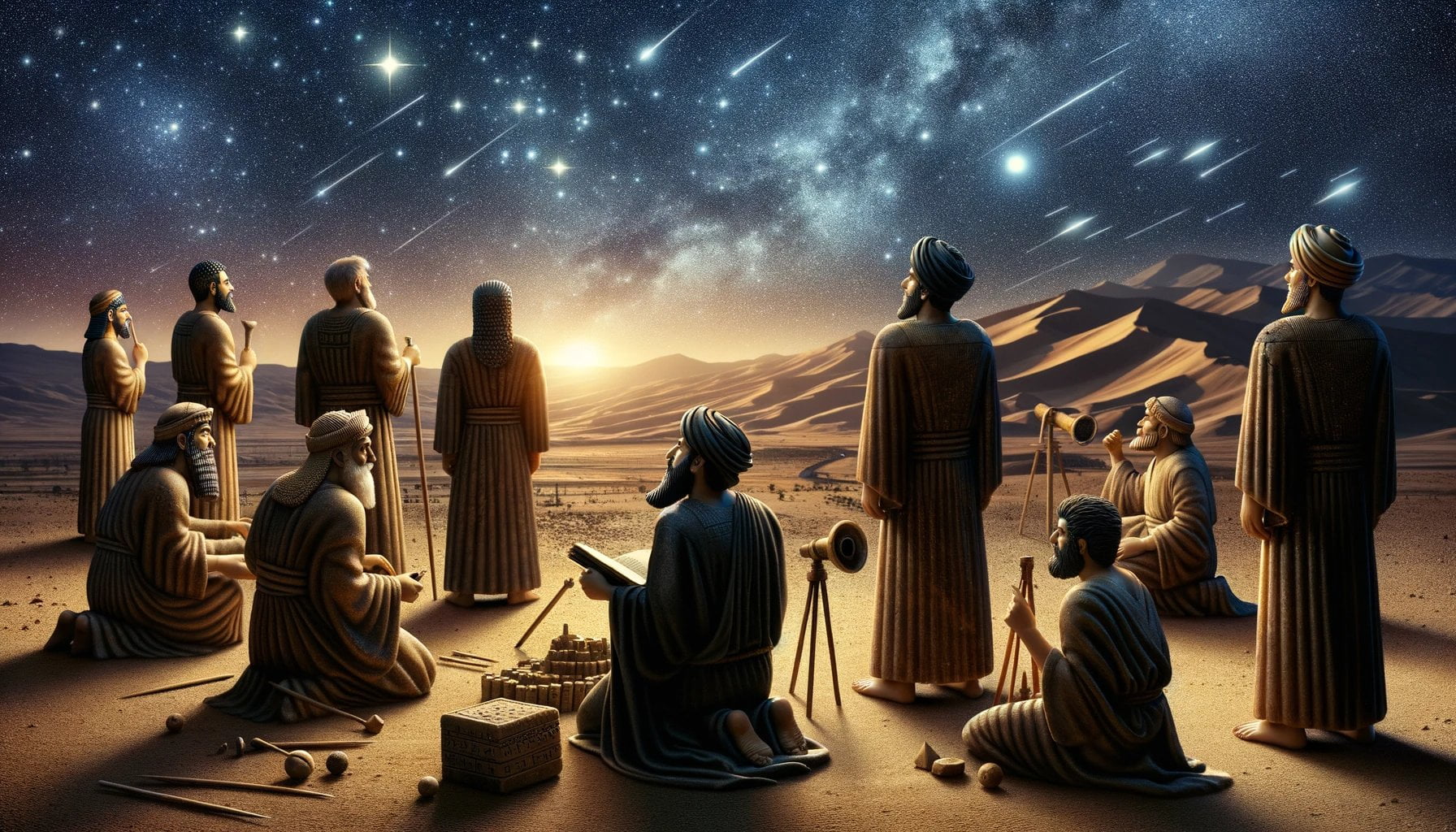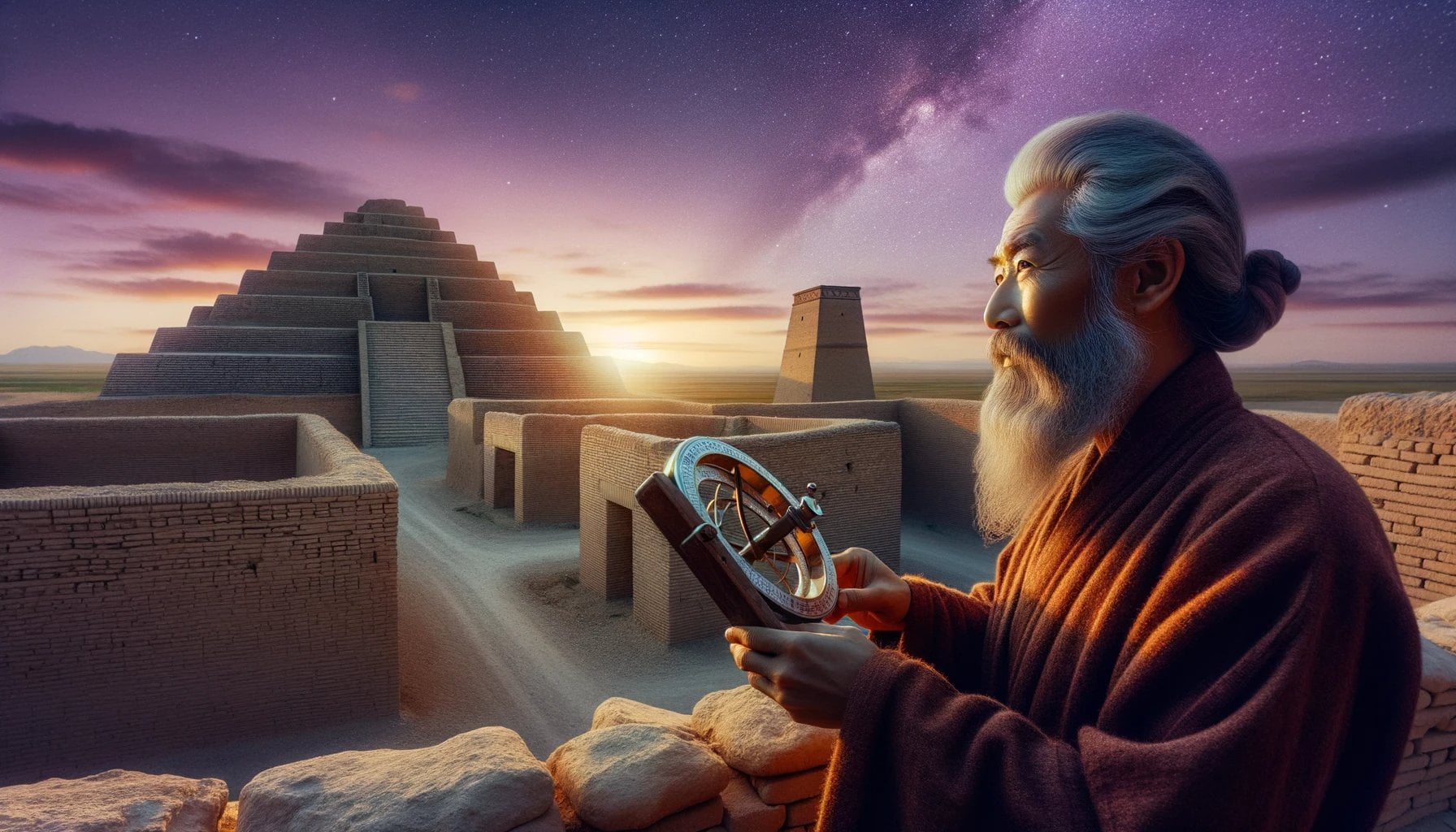The celestial wonders of Mesopotamian astronomy are unveiled in this captivating exploration of ancient achievements, discoveries, inventions, and facts. Delve into the rich tapestry of Mesopotamian astronomical practices and methodologies as you embark on a journey that reveals their profound contributions to our understanding of the cosmos. From deciphering ancient texts to interpreting complex star charts, this article sheds light on the advanced knowledge, innovative techniques, and invaluable role of Mesopotamian astronomers in shaping the foundations of modern astronomy.

Key Takeaways:
- Ancient Astronomy and The Sumerians: The Sumerians were the first to practice advanced astronomical techniques and explore the scientific study of stars and celestial objects.
- Babylonian Ancient Astronomy – Observation and Prediction: The Babylonians made significant contributions to astronomy, using the heavens to establish an accurate calendar and predict astronomical phenomena through mathematical calculations.
- The Babylonian Legacy and The History of Astronomy: Babylonian astronomy influenced other civilizations, such as the Persians, and played a profound role in the history of astronomy.
- Observations and Measurements: Mesopotamian astronomers observed and documented various celestial events, using tools like the astrolabe and gnomon to measure angles and track the positions of celestial bodies.
- Time Measurement: Mesopotamian astronomers developed sophisticated methods for measuring time, including dividing the day into smaller units and creating calendars based on the Earth’s rotation and the positions of stars.
- Predictions and Astrology: Mesopotamian astronomers used their observations and calculations to make predictions about future celestial events, developing astrology to interpret the influences of these events on human affairs.
- Influence on Science: Mesopotamian astronomy had a significant impact on the development of science and the understanding of the natural world, laying the foundation for advancements in astronomy and other scientific disciplines.
Mesopotamian Astronomy
The ancient civilization of Mesopotamia, specifically the Sumerians and Babylonians, made groundbreaking contributions to the field of astronomy. Their innovative techniques and observations paved the way for our modern understanding of the celestial realm. Let’s delve into the fascinating world of Mesopotamian astronomy and explore the wonders it holds.
Ancient Astronomy and The Sumerians
When we think of the beginnings of astronomy, we owe much of our knowledge to the Sumerians. This ancient civilization, situated in Mesopotamia, were pioneers in the exploration of the night sky. They developed sophisticated astronomical practices and laid the foundation for further discoveries in this field.
Babylonian Astronomy – Observation and Prediction
Following the Sumerians, the Babylonians took the study of astronomy to new heights. They recognized the periodic nature of celestial phenomena and used meticulous observations and mathematical calculations to predict these events. The Babylonians employed their astronomical expertise to develop a reliable calendar, which was of utmost importance in their society.
The Babylonian Legacy and The History of Astronomy
The knowledge and practices of Babylonian astronomy had a lasting impact on subsequent civilizations. The Persians, in particular, played a crucial role in preserving and further developing this field. Their contributions to Mesopotamian astronomy helped shape the course of astronomical history.
Observations and Measurements
Mesopotamian astronomers were keen observers of celestial events. They meticulously documented planetary movements, eclipses, and comets. Using simple tools like the astrolabe and gnomon, they measured angles and tracked the positions of celestial bodies. These precise observations formed the basis for their calculations and predictions.
Time Measurement
Mesopotamian astronomers had a sophisticated understanding of time measurement. They divided the day into smaller units and created calendars that accurately accounted for the Earth’s rotation and the movement of stars. Their knowledge of timekeeping systems laid the groundwork for future developments in astronomy and other scientific disciplines.
Predictions and Astrology
In Mesopotamian culture, astronomers believed that celestial events directly influenced human affairs. They used their observations and calculations to make predictions about future phenomena, developing astrology as a means of interpreting these influences. Astrology was an integral part of Mesopotamian society and had a profound impact on their understanding of the world.
Influence on Science
Mesopotamian astronomy played an instrumental role in the development of science and our understanding of the natural world. Their accurate observations and mathematical calculations set the stage for future advancements in astronomy and other scientific disciplines. We owe much of our knowledge in these areas to the pioneering efforts of ancient Mesopotamian astronomers.
In conclusion, the realm of Mesopotamian astronomy holds a treasure trove of wisdom and innovation. From the Sumerians to the Babylonians, their methods and observations continue to intrigue and inspire us. Exploring the wonders of Mesopotamian astronomy allows us to appreciate the significant contributions these ancient civilizations made to our understanding of the cosmos.
Sources:
– Explorable.com – Mesopotamian Astronomy
– Wikipedia – Babylonian astronomy
Mesopotamian swords were legendary weapons that shaped the history of warfare. Explore the fascinating world of these ancient weapons here.
Ever wondered what is a characteristic of Mesopotamian architecture that sets it apart from others? Discover the unique features that defined this architectural style here.
Delve into the mysteries of Mesopotamian cosmology and uncover the beliefs and practices of these ancient civilizations here.
Uncover the wisdom and philosophical insights of Mesopotamian thinkers who pondered the mysteries of life here.
Curious about the remarkable achievements of the Mesopotamians? Embark on a journey through their remarkable innovations and contributions here.
Discover the economic systems and trade networks that thrived in ancient Mesopotamia, laying the groundwork for modern commerce here.
Mesopotamian Astronomy Inventions
In the ancient world, the fascinating field of Mesopotamian astronomy emerged as a beacon of scientific and technological prowess. Through their relentless observation of the night sky, Mesopotamian astronomers paved the way for significant discoveries and innovations that still marvel us today. Let’s delve into the realm of Mesopotamian astronomy and explore the remarkable inventions that shaped our understanding of the cosmos.
The Astrolabe: Navigating the Celestial Seas
In the vast ocean of celestial wonders, Mesopotamian astronomers sought to navigate with precision. Enter the astrolabe, a tool of immense ingenuity. This remarkable invention allowed astronomers to measure angles, track the positions of stars, and even predict celestial events. The astrolabe revolutionized the way ancient astronomers interpreted the night sky, enabling them to unravel the secrets of the cosmos.
The Zodiac: Unlocking the Celestial Code
One of the most profound inventions of Mesopotamian astronomy is the discovery of the band of zodiacal constellations. The Babylonians, inheritors of the Sumerian legacy, meticulously documented these constellations and their intricate patterns. This celestial code, featuring familiar figures like Leo and Taurus, served as a map of the heavens and formed the foundation of astrology. The zodiac not only provided a framework for understanding the influence of celestial events on human affairs but also laid the groundwork for modern Western astrology.
The Calendar: Mapping Time with Precision
In their quest to understand the rhythm of the cosmos, Mesopotamian astronomers harnessed their extensive knowledge to create accurate calendars. The Babylonians, in particular, crafted a calendar that accounted for the Earth’s rotation and the movement of stars. This precise timekeeping system was crucial for agricultural purposes, religious ceremonies, and even astrological predictions. The Mesopotamians’ mastery of time measurement underscores their dedication to unraveling the celestial mysteries that surrounded them.
Mathematics: Calculating Celestial Phenomena
To unlock the secrets of the heavens, Mesopotamian astronomers turned to the powerful language of mathematics. They developed sophisticated mathematical techniques to calculate celestial phenomena such as planetary positions, eclipses, and comets. By harnessing the power of numbers, they not only honed their observational skills but also laid the groundwork for future astronomical advancements.
Writing: Preserving Ancient Wisdom
The invention of writing in Mesopotamia revolutionized the field of astronomy. By recording their observations and discoveries on clay tablets, Mesopotamian astronomers bestowed upon future generations a treasure trove of astronomical knowledge. These ancient texts allowed later scholars to decipher the secrets of Mesopotamian astronomy and propelled the growth of astronomical research.
Key Takeaways:
- The astrolabe, a remarkable invention, enabled Mesopotamian astronomers to measure angles and track celestial bodies’ positions.
- The discovery of the zodiac, a band of constellations, formed the basis of astrology, contributing to our understanding of celestial influences on human affairs.
- Mesopotamian astronomers meticulously crafted accurate calendars, reflecting their in-depth knowledge of the Earth’s rotation and star movements.
- Mathematical calculations played a vital role in Mesopotamian astronomy, helping astronomers predict and understand celestial phenomena.
- The advent of writing allowed Mesopotamian astronomers to document their observations and discoveries, preserving their legacy for future generations.
Sources:
– Mesopotamian Astronomy – Babylonian and Persian History
– Babylonian astronomy – Wikipedia
Mesopotamian Astronomy Facts
The Significance of Astronomy in Ancient Mesopotamia
- Astronomy held immense importance in ancient Mesopotamian culture, with the priesthood being responsible for studying and interpreting celestial phenomena.
- The Mesopotamian priests recognized the celestial realm as a means to gain insights into the divine and to understand the passage of time.
The Role of Priests and Their Observations
- Mesopotamian priests developed a sophisticated system of studying the night sky, documenting their observations and predicting celestial events.
- They meticulously recorded the movements of celestial bodies, such as planets, stars, and the Moon, using tools like the astrolabe and gnomon.
Elements of Mesopotamian Astronomical Knowledge
- Ancient Mesopotamians possessed advanced knowledge of celestial bodies. They recognized and studied the five planets visible to the naked eye, the Sun, the Moon, and an array of stars.
- The Mesopotamians also identifed the periodicity of celestial events and developed a 12-month lunar-based calendar, enabling them to predict solstices and eclipses.
The Astral Religions and Myths of Mesopotamia
- The myths and legends of Mesopotamia are deeply intertwined with the stars, planets, and constellations. They are as old as Mesopotamian astronomy itself, dating back to the third millennium BC.
- These ancient stories and beliefs laid the groundwork for astral religions and had a profound influence on religious practices and mythologies worldwide.
The Lasting Legacy of Mesopotamian Astronomy
- Mesopotamian astronomers made lasting contributions to the field of astronomy, inspiring subsequent civilizations and shaping the foundations of modern science.
- Mathematics played a crucial role in their observations and calculations, enabling them to accurately predict planetary positions, eclipses, and comets.
- Their invention of the astrolabe not only facilitated measuring angles and tracking celestial bodies but also allowed for predicting celestial events.
Key Takeaways:
- Astronomy had significant cultural and religious importance in ancient Mesopotamia, with priests being the primary investigators.
- Mesopotamian priests studied and predicted celestial events using tools like the astrolabe and gnomon.
- They possessed knowledge of the five visible planets, the Sun, the Moon, stars, and other celestial phenomena.
- Mesopotamian astronomy influenced astral religions and myths, shaping religious beliefs worldwide.
- Their advancements in measuring and predicting celestial events set the foundation for modern astronomy.
Sources:
– Sutori: Mesopotamian astronomy and astrology
– judy-volker.com: The Shapes of the Stars: Discovering the Mesopotamian Constellations

FAQ
Q1: What were some of the achievements in Mesopotamian astronomy?
A1: Mesopotamian astronomy achieved several notable accomplishments, including the development of an accurate calendar based on moon cycles, the prediction of solstices and eclipses, and the production of astronomical tables.
Q2: What did Mesopotamian priests study in astronomy?
A2: Mesopotamian priests were the ones who studied the stars and celestial phenomena as part of their religious duties.
Q3: Which celestial objects were known and studied in ancient Mesopotamia?
A3: In ancient Mesopotamia, all five planets visible to the naked eye, along with the Moon, the Sun, the stars, and other celestial phenomena, were known and studied.
Q4: What was the influence of Mesopotamian astronomy on religions worldwide?
A4: Mesopotamian astronomy had a significant influence on religions worldwide as it was the origin of astral religions and myths related to stars, planets, and constellations.
Q5: How old is the field of Mesopotamian astronomy?
A5: Mesopotamian astronomy dates back to the third millennium BC, and the myths and legends related to stars, planets, and constellations are as old as the field itself.
- Amazing March Fun Facts: Unveiling History & Celebrations - April 15, 2025
- Master how to write height: A complete guide - April 15, 2025
- How High Are Your Standards Test: Find Your Perfect Match Now - April 15, 2025
















